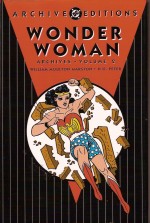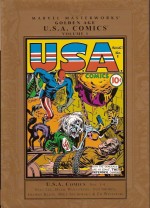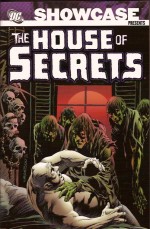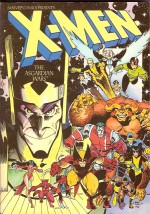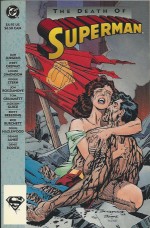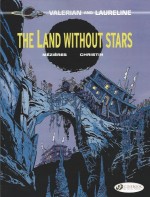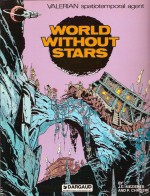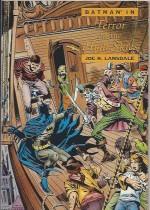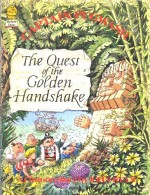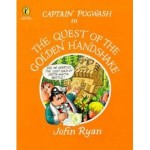

By Murray Ball (Orin Books)
ISSN: 0156-6172
For one of the most successfully syndicated strips in the world, Footrot Flats seems to have passed from public consciousness with painful alacrity. Created in 1975 by cartoonist and comics artist Murray Ball after returning to his New Zealand homeland, the fantastical farm feature ran for a quarter of a century, with the first of a multitude of strip compendia, calendars and special editions released in 1978.
It appeared in newspapers on four continents until 1994 when Ball retired it, citing reasons as varied as the death of his own dog and the state of New Zealand politics.
Thereafter books of new material were released until 2000, resulting in 27 daily strip collections, 8 volumes of Sunday pages known as “Weekendersâ€, 5 pocket books and ancillary publications such as “school kits†and the aforementioned, all-new, annual calendars.
There was a stage musical, a theme park and a truly superb animated film Footrot Flats: The Dog’s Tail Tale.
The well travelled and extremely gifted Mr. Ball had originally moved to England in the early 1960s, becoming a cartoonist for Punch (producing Stanley the Palaeolithic Hero and All the King’s Comrades) as well as drawing numerous strips for DC Thompson and Fleetway and concocting a regular political satire strip in Labour Weekly.
After marrying he returned to the Old Country and resettled in 1974 – but not to retire…
Ball was busier than ever once he’d bought a small-holding on the North Island to farm in his “spare timeâ€. This inevitably led to the strip under review. Taking the adage “write what you know†to startling and occasionally stomach-churning heights, the peripatetic pencil-pusher promptly gave up sleeping altogether to limn these wickedly funny escapades concerning the highs and lows – and most definitely “wildests†– of the agricultural life as experience by the earthily metaphoric Wallace Footrot Cadwallader: an oaf in search of the plot…
Wal is a big, bluff farmer. He’s a regular bloke: likes his food; loves his sport – Rugby, Football (the Antipodean kind, not the girl’s game the Yanks call Soccer) and Cricket; each in its proper season and at no other time…
He owns a small sheep farm (the eponymous Footrot Flats) best described as “400 acres of swamp between Ureweras and the Seaâ€.
With his chief – and only – hand Cooch Windgrass (a latter-day Francis of Assisi), and a sheepdog who calls himself “Dogâ€, Wal scrapes a living – and one too many bolshie beasts – but is, at least, his own boss.
Dog is the star (and narrator) of the strip: a cool, if imaginative and overly sentimental know-all and blowhard, utterly devoted to his, for want of a better term, Master – unless there’s food about, or Jess (the sheepdog bitch from down the road) is in heat again.
Dry, surreal and wonderfully self-deprecating, the humour comes from the perfectly realised characters, human and otherwise, the tough life of a bachelor farmer and especially the country itself.
Other notable regular’s include Wal’s fierce and prickly little niece Janice – known to all as Pongo, the sternly staunch and starched Dolores Monrovia Godwit Footrot, AKA Aunt Dolly, wise guy local lad Rangi Wiremu Waka Jones, Dolly’s spoiled Corgi Prince Charles, and Pew, a sadistic, inventive, obsessed and vengeful magpie who bears an unremitting grudge against Farmer Cadwallader …
The biggest and most terrifying scene-stealer is Horse, a monstrous and invulnerable tomcat who lords it over every living thing in the district …
The comedy is as always, absolutely top-rate and Ball is one of those gifted few who can actually imbue a few lines on paper with the power of Shakespeare’s tragedy and the manic hilarity of manic geniuses like the Marx Brothers or Laurel and Hardy. When combined with his sharp, incisive writing the result is pure irresistible magic.
In the UK Titan Books published three volumes in the early 1990s and foreign editions were released in German, Japanese, Chinese and American, but the same material is readily available from a number of publishers and retailers; here more than ever the internet is your friend.
The dry dramas and funny old businesses generally accrue via the laconic raconteuring of “The Dogâ€, a great lazy canine softie, eking out his daily crusts (and oysters and biscuits and cake and lamb’s tails and scraps and chips and…), alternately getting on with or annoying the sheep, cows, bull, goat, hogs, ducks, bugs, cats, horses, geese, all the resolutely undomesticated wildlife and the decidedly odd humans his owner knows or is related to.
Dog – his given name is an embarrassing, closely and violently guarded secret – loves Wal but always tries to thwart him if the big bloke is trying to do unnecessarily necessary farm chores such as chopping down trees, burning out patches of scrub, culling livestock, or trying to mate with the pooch’s main rival Darlene “Cheeky†Hobson, hairdresser-in-residence of the nearest town.
This extra-large (262x166mm) landscape monochrome fifth volume again comes from the Australian editions series and started the tradition of dividing the strips into approximately seasonal sequences, as well as beginning to show another near unique facet of the series with the ever-expanding cast visibly aging in what approximates real-time in the world of periodical publishing.
After a rather reluctant biography from the artist’s then teenaged son Mason, an appreciation from the canine star’s occasional paramour Jess the sheep-bitch and an introduction from The Dog himself, a selection of spot gags and cartoons describing anti-Cheeky tactics precedes the strip sensations of ‘Spring’ as Wal and the Dog prepare for the grimy, smelly profusion of life which follows the far from gentle rainy season.
When not living in terror of the farm cat Horse, teasing the corpulent Corgi Prince Charles or dreading the competition with noble hunting hound Major, the Dog runs continually afoul of the deer which infest the spread. A hilarious sequence of the humans trying to take Horse to the Vet easily segues into a plethora of close encounters as the livestock all experience the stirrings of love in their prodigious loins…
With ‘Summer’ comes cricket, baby animals, sea fishing, and Pongo for the school holidays: all offering new ways to add to Wal’s blood pressure and Dog’s embarrassment. This year’s particular novelties include water shortages, hang-gliding and using a helicopter to herd deer – and why that’s such a good idea…
‘Autumn’ brings harvests and rugby and more rain and sheep well into the pregnancies that make Wal’s life so rewarding (yeah, more sarcasm, mate) whilst ‘Winter’ offers floods, lambing season – always at night and always in rain or snow – plus, mud, footy, mud, river-fishing for whitebait and mud, although this year the old oaf does try his hefty hand at golf and gets talked into coaching the school rugby team with results any idiot could predict; especially as The Dog is on the team too…
Footrot Flats, whether singly or in collections such as this, always marries sarcasm, satire, slapstick and surreality in a perfect union of pathos and down to earth (and up to your elbows) humour that is utterly captivating; expansive, efficient, exciting and just plain brilliant.
If you feel the need to fill your lungs with country air, your boots with squelchiness and your brain with breathtaking belly-laughs why not give the Dog a go? Let your preferred search engine be your guide…
Go on. Fetch!
© 1981 Murray Ball. All Rights Reserved.

